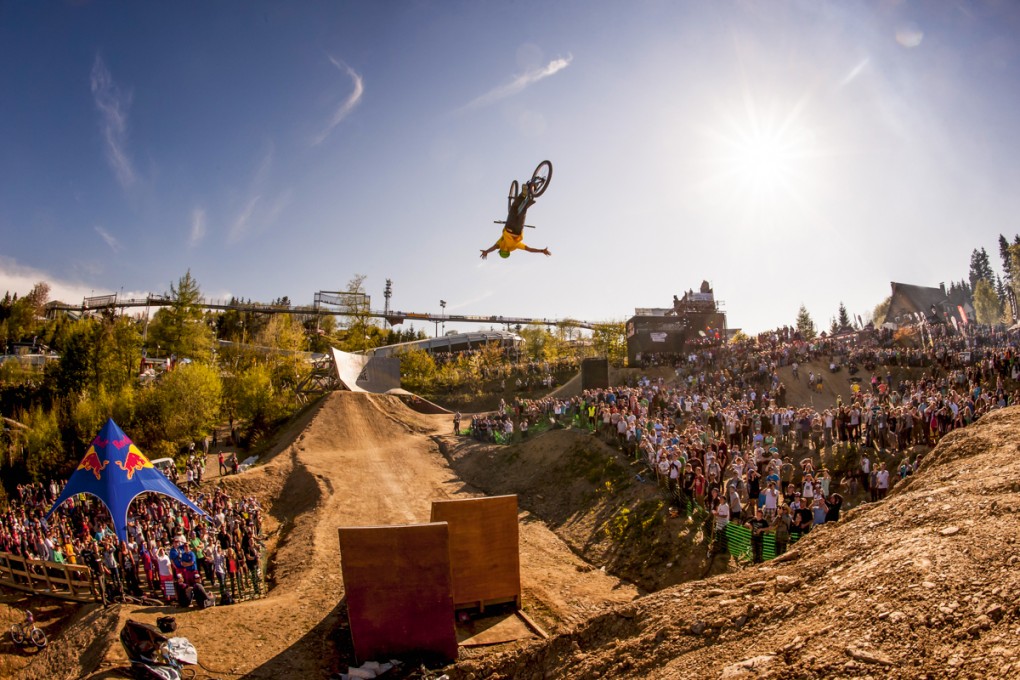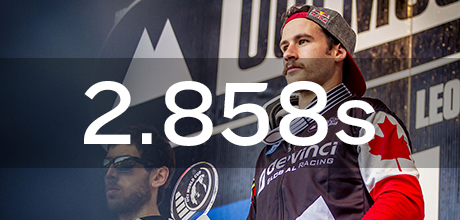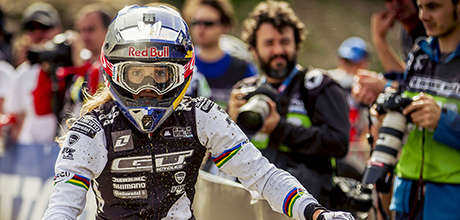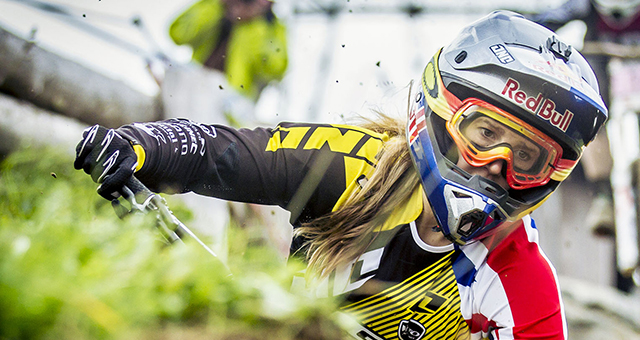
Ten years ago I used to ride in dirt contests. Although riding dirt was, and remains, my favourite thing to do I could never have imagined it would really get any bigger than it was. I was short–sighted. I could only see it appealing to the people in front of me: the mongs I rode with in the woods. I loved it but imagined it would remain pretty much the same size. It would offer the same shit prizes, rubbish jumps, weak crowds, no money. I didn’t think it would ever translate to a bigger stage. I couldn’t have been more wrong…
From Dirt Issue 137 – July 2013
Words by Olly Wilkins. Photos by Christoph Laue.
I turned up in Germany for the Bergline and it hit me hard how much it had grown and changed from my previous visit 3 years before. Obviously it was running alongside a host of other contests under the Dirtmasters umbrella but there was an overwhelming focus on slopestyle. Bergline was undoubtedly the main event and a big draw for the whole festival. Both the course and its surroundings had hundreds of thousands of Euros spent on making them perfect. It looked amazing. The perfect mix of big dirt jumps and the necessary slopestyle obstacles. About as far away from the old BMX dirt style contests as you could get. Cameras for live streaming were positioned exactly where they needed to capture a full run and the judges had their own tower. This was gonna be broadcast to the world as well as the 50,000 people watching it on the day. A pretty big spread for any marketing executive. How had this niche got so big? How had the riding taken such a giant leap? How had they possibly improved on the NEC Bikeshow in 2002?!?!
 Slopestyles biggest key to success is the spectacular. The FMB (Freeride Mountain bike Tour) and its sponsors have harnessed this to reach the masses. This goes for every large event they play a part in organising. Reaching this wider audience is always the dream for every sporting organisation. Larger sports have such huge zombie followings and it’s easy to see the difference this makes. Your lifetime earnings as a pro mountain bike rider could match just a year’s (or week’s) contract in football terms. A crazy comparison when you consider both athletes are performing at the very highest levels. Every discipline of Mountain biking has always struggled in really translating to that wider audience.
Slopestyles biggest key to success is the spectacular. The FMB (Freeride Mountain bike Tour) and its sponsors have harnessed this to reach the masses. This goes for every large event they play a part in organising. Reaching this wider audience is always the dream for every sporting organisation. Larger sports have such huge zombie followings and it’s easy to see the difference this makes. Your lifetime earnings as a pro mountain bike rider could match just a year’s (or week’s) contract in football terms. A crazy comparison when you consider both athletes are performing at the very highest levels. Every discipline of Mountain biking has always struggled in really translating to that wider audience.
For you and I, watching a World Cup rider hit a turn has the same effect as watching an FMB rider trick a 40 foot double. I enjoy watching both as I can appreciate them individually. This may not be the same for someone who rides a bike once or twice a year. Someone who rides with a Sainsbury’s bag hanging off the bars and their trousers tucked into their Wilson socks. Sure they enjoy watching the guy ‘riding fast through the trees’ in his pyjamas and his Power Ranger helmet, but given the chance to see some flips…and crashes? It’s pretty easy to understand.
With outside sponsors aiming slopestyle at the masses in this way, outside money has appeared. This has undoubtedly accelerated the progression in riding, which can only be a good thing. The FMB has tied together all of these events, which previously stood alone. It has created a governing body, and more importantly, a platform for the discipline to grow. Freeride has gone from being the annoying grungy younger brother of MTB to the entrepreneurial teen.
Televising our sport is another hurdle that slopestyle may clear. Downhill is super hard to capture. How steep a hill is or how wild a section is. It’s quite hard to understand for the general public. Although going up against the clock draws a very clear winner there are important elements that you cannot get across that well. Portraying gradient and speed is really difficult. XCO…is…boring, lacks the action needed to keep normal people from changing channel. I’d rather watch a cookery show than that XCE joke. Enduro…well I don’t know how they’re gonna do that. Slopestyle has that spectacular draw to the average person. It’s a curiosity. Again, people want to see those flips and those crashes.
 Another key point is that the average slopestyle bike (with a few exceptions) costs around £1500. You can buy one that looks very similar for around £500. When comparing this to the same entry level XC or DH bike that’s pretty cheap. This makes it all seem very accessible. After all, riding a rock garden is not on your ‘to do’ list as a 10 year old…catching some air most definitely is, bro. Appealing to this younger market has long been a mystery to grown ups trying to sell shit. Slopestyle fits well into the ‘Action sports’ marketing category and it has clear appeal to a specific age group.
Another key point is that the average slopestyle bike (with a few exceptions) costs around £1500. You can buy one that looks very similar for around £500. When comparing this to the same entry level XC or DH bike that’s pretty cheap. This makes it all seem very accessible. After all, riding a rock garden is not on your ‘to do’ list as a 10 year old…catching some air most definitely is, bro. Appealing to this younger market has long been a mystery to grown ups trying to sell shit. Slopestyle fits well into the ‘Action sports’ marketing category and it has clear appeal to a specific age group.
In short, Bergline was a clear example of why these contests work. It got me thinking about how healthy the FMB tour has become. With MTB slopestyle’s first appearance at the X–Games just around the corner the future looks to be even bigger and better. Mass appeal for Mountainbiking? Freestyle might just be the unlikely hero. Munich X–Games could be a big day for us all.





